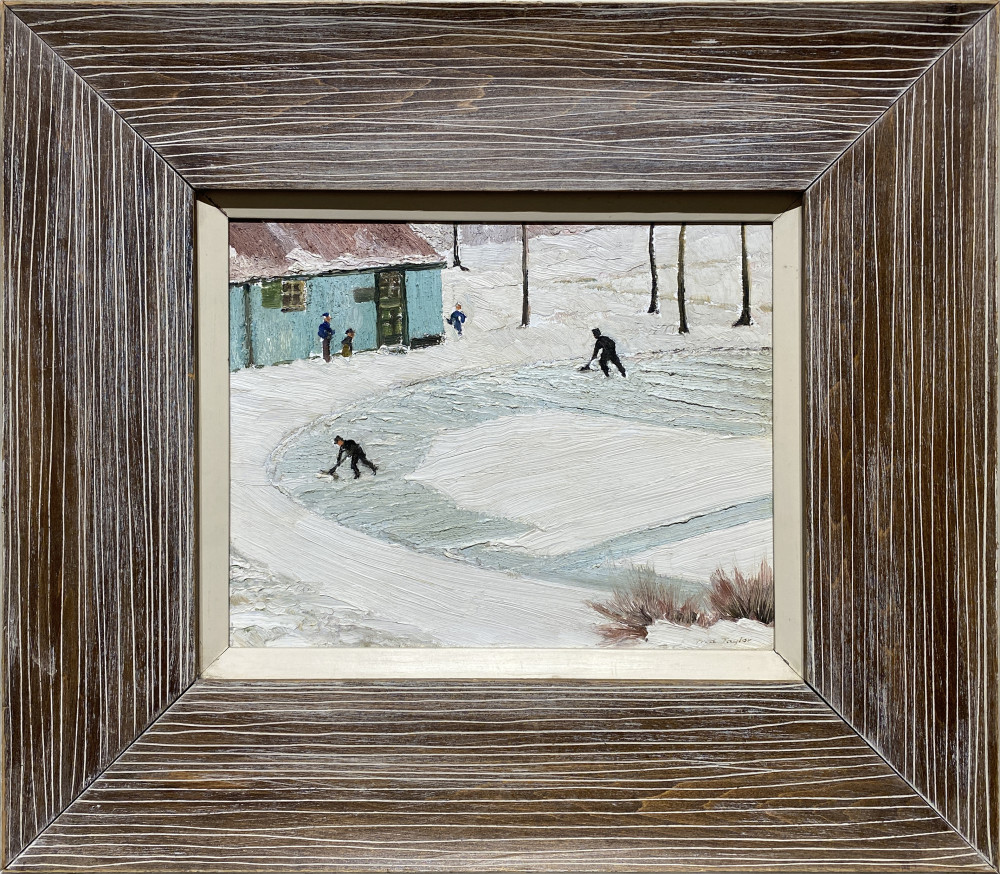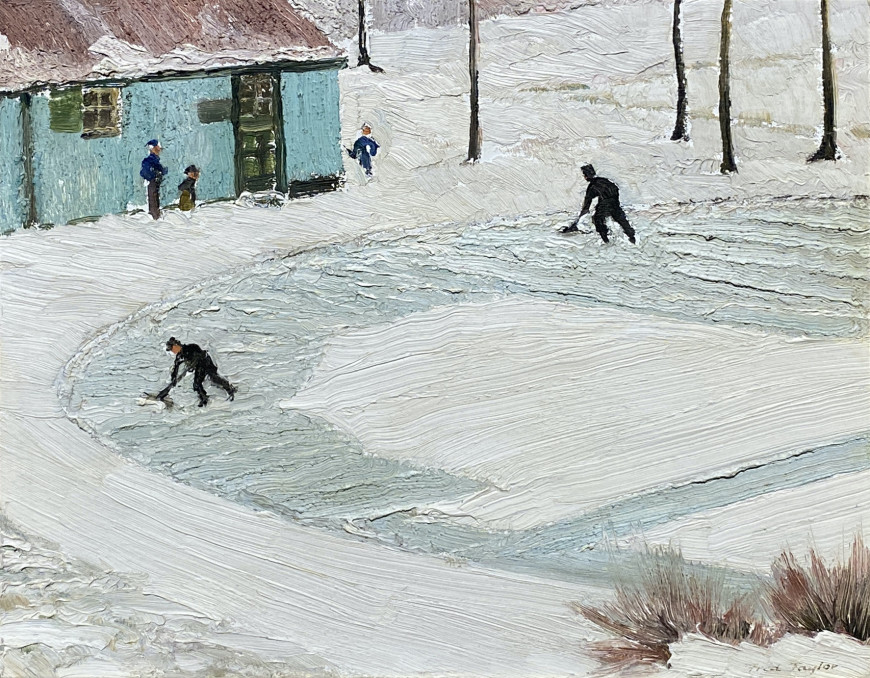-
Œuvres d'art
Frederick B. TaylorCleaning The Ice, Beaver Pond - Mt. Royal, 1949 (December 22)1906-1987Oil on panel8 3/4 x 10 1/4 in
22.4 x 26.2 cm
This work is included in the Alan Klinkhoff Gallery Frederick Taylor Inventory, no. 1054SoldInscriptions
signed, 'Fred Taylor' (lower right); signed, titled and inscribed '1054 / Cleaning the Ice / Beaver Pond / Frederick B. Taylor / 22 XII.49' (verso, centre)Provenance
Dominion Gallery, Montreal.
Private collection, Montreal.
— We have written previously our opinion that Fred Taylor is an artist of importance far greater than his present recognition. His methods, and materials showing the attention to detail showing his academic training as an architect, partnered with the perspective of a poet in paint of an artist with a social conscience, Taylor’s catalogue includes a body of work including the urban working man that is of significance to Canadian art of his period.
At the time of this painting, December 22, 1948, Taylor was living immediately west of Montreal’s Mount Royal, in what is now a historic property known as Trafalgar Lodge (the Albert Furness House). “Beaver Pond” as he called it, was located literally a 15 minute walk from his house and studio, a pleasant walk or, knowing Fred, an easy ski, over the mountain. The “pond” had been developed hardly ten years before from a swamp, allowing urban dwellers living in all the areas around Mount Royal to enjoy winter leisure time skating on the frozen man made lake, now known as Beaver Lake. Fred’s focus in this work is the expanse of the playground and the two municipal workers clearing it. He painted a second version from the same perspective, the other with only two figures. We are not aware of a larger composition by Taylor painted from these sketches.
When we saw him most often he was already in his mid 60s in age. Tall in stature and powerful in build, his hands, one could well believe the history one might have read of his collegiate boxing acumen. We should note here that he did not speak of those days and experiences. Fred was a mild mannered and polite gentleman, soft in tone of speech and dressed in a fashion I have seen only in movies of a 1940 - 1950 vintage.
He did not speak of his activism, his promotion of the labour movement in Canada, his painting experiences in the Angus Shops and Dominion Engineering Works during WWII as he petitioned to have the contribution of Canadian laborers supplying the war effort recognized publicly. He did not speak of his friendship with Dr. Norman Bethune. These days were behind him. To escape his painful condition of gout he had long since moved to the heights of San Miguel de Allende. Those stories were available in his paintings of the period and to the Canadian art books describing a period perhaps best known to amateurs of fi lm and remember “The Front” starring Woody Allen, a story line based in the days of America’s McCarthyism.
















